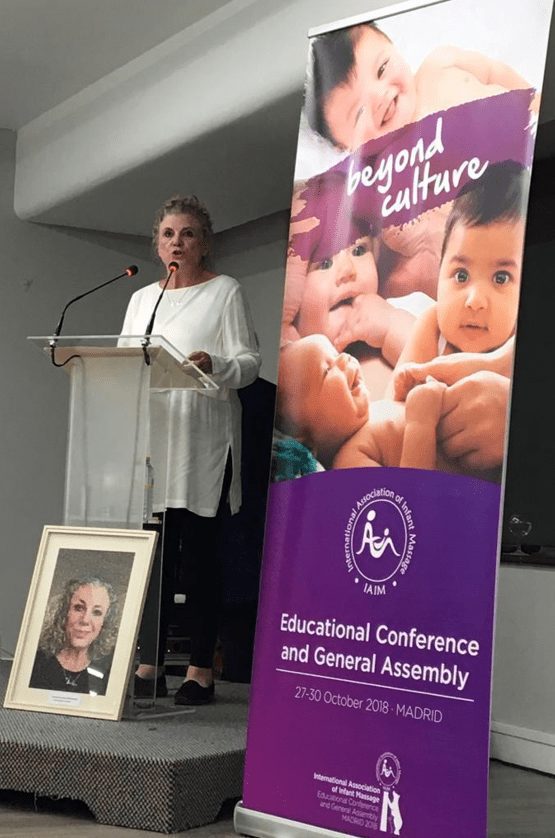I was demonstrating some massage strokes on a baby in one of my seminars. The baby had been premature and had undergone the additional trauma of an injury to the skin of her chest that caused some scarring. Her mother said that she enjoyed being massaged, except she could not tolerate having her chest touched. The mother begged me to massage her baby to see if the baby cried this way during any massage, or “is it just me?” I assured her it wasn’t just her.
The baby responded well and accepted the massage for her legs, feet, and stomach. But when I reached the chest area she began to cry as if being hurt. Rather than stopping and shushing her, I continued to gently mold my hands to her chest in what we call “resting hands.” I started to actively listen to what she might be saying through her tears. “Yes, you’ve been through a lot of pain,” I said. “Tell me about it. I am listening.” She cried hard, and after a moment she moved her mouth as if talking, though she was crying. She looked at me intensely, as if she was trying to tell me something very important.
“You were very brave, and I know your mommy is very proud of you,” I said. “When you’re ready to let go of that pain, she’s here to help you. We all love you very much.” I continued to gently hold her chest as she whimpered, and let her know I was listening to her. After several minutes, her cries ceased and her mother picked her up to comfort her.
The next day her mother brought her again for a demonstration. This time, I asked the mother to massage her. When she began massaging her baby’s chest, the baby opened out her arms and smiled. Her mother turned to me with tears in her eyes, saying this was the first time the baby had ever been able to accept someone touching her chest. Later, the baby’s mother reported that the baby loved being touched and fully accepted a complete massage.
Note: this incident happened at one of my first Trainer’s seminars, before we decided that only the parent should touch the baby. If I were to encounter this today, I would describe to the mother what to do, demonstrating on a doll; have her do the “resting hands,” have her talk to her baby in this way (I would demonstrate on the doll). It might take some verbal guiding but I think the result would be the same. Getting the mother to relax would be the most important part of encouraging her to do it.
by Vimala McClure




